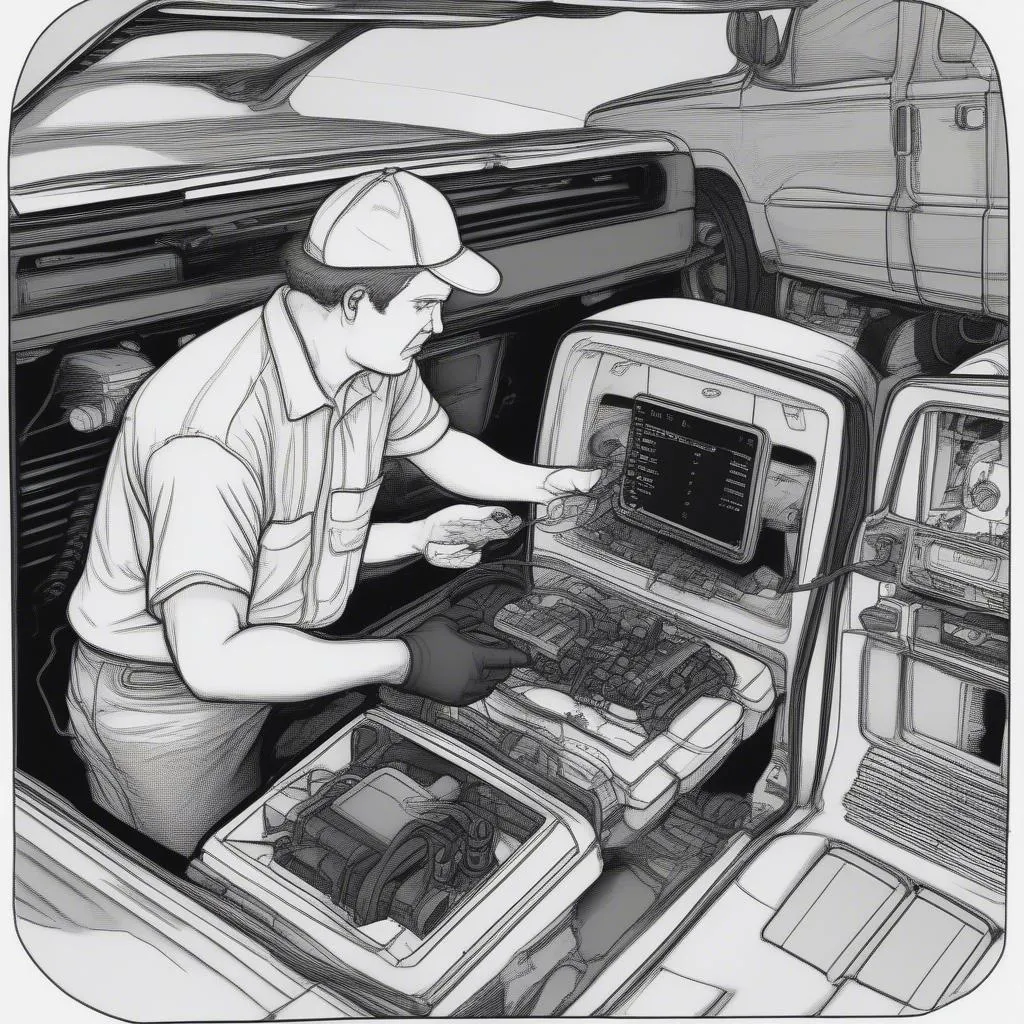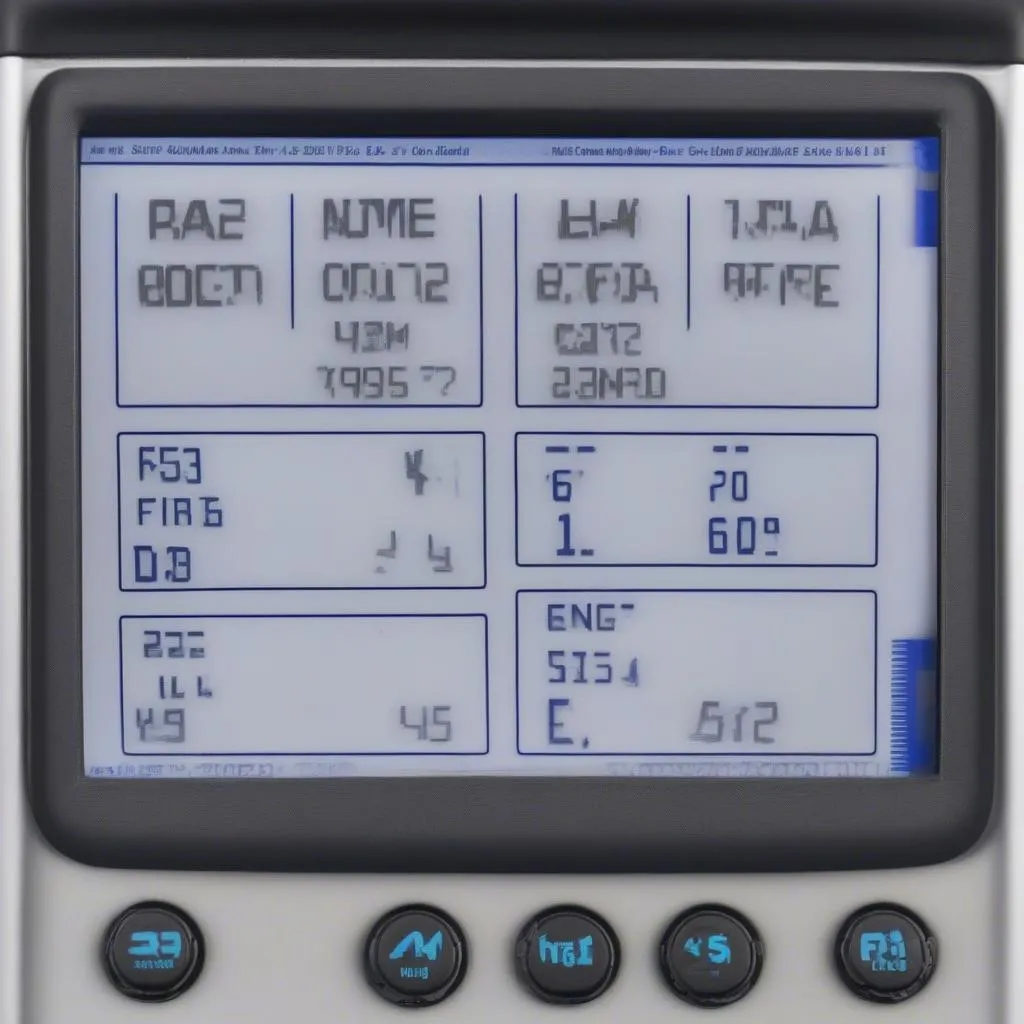Picture this: You’re cruising down Route 66 in your trusty 1996 Ford F150, wind in your hair, classic rock on the radio. Suddenly, that dreaded “Check Engine” light throws a wrench in your road trip plans. What do you do? Before you hit the panic button, remember those mysterious “1996 Ford F150 Obd Codes” you once heard about. Could they hold the key to deciphering your truck’s distress signal?
Decoding the Mystery: What are 1996 Ford F150 Obd Codes?
Whether you’re a seasoned mechanic or a DIY enthusiast, understanding your vehicle’s On-Board Diagnostics (OBD) system is crucial. In simple terms, these codes are your truck’s way of communicating a problem. Think of them as a secret language your F150 uses to tell you something’s wrong.
From a mechanic’s perspective, these codes are invaluable. “A 1996 F150 uses OBD-II, a standardized system that revolutionized diagnostics,” says John Miller, a seasoned mechanic from Texas. “Instead of relying on gut feeling, we can plug in a scanner and get specific codes, pointing us directly to the issue – be it a faulty oxygen sensor or a loose gas cap.”
Why Should You Care?
Knowing how to interpret these codes can save you time, money, and a whole lot of headaches. Imagine being able to diagnose a problem before it escalates, potentially avoiding a costly repair down the line.
Diving Deeper: How to Read 1996 Ford F150 Obd Codes
1996 marked the year the OBD-II system became standard on most vehicles, including your F150. This standardized system uses a universal connector, typically located under the driver’s side dash. To access these codes, you’ll need an OBD-II scanner, a relatively inexpensive tool available at most auto parts stores.
Once connected, the scanner will display a series of alphanumeric codes. These codes, standardized by the Society of Automotive Engineers (SAE), follow a specific format:
- The first character: Indicates the system related to the code (e.g., “P” for Powertrain, “B” for Body, “C” for Chassis, “U” for Network).
- The second character: Specifies whether the code is generic (0) or manufacturer-specific (1).
- The third character: Pinpoints the specific system or sub-system involved (e.g., “1” for Fuel and Air Metering, “2” for Injector Circuit).
- The final two characters: Indicate the specific problem within that system.
For example, a code “P0171” indicates a Powertrain issue (P), a generic code (0), related to the Fuel and Air Metering system (1), with a specific problem identified as “System Too Lean (Bank 1)” (71).
 obd-scanner-connected-to-car
obd-scanner-connected-to-car
Common 1996 Ford F150 Obd Codes and What They Mean
While a complete list of OBD-II codes is beyond the scope of this article, let’s explore some common codes you might encounter in your 1996 F150:
- P0171 & P0174: These codes often signal a vacuum leak, a faulty oxygen sensor, or a problem with the fuel delivery system.
- P0300: This indicates a random misfire, which could be caused by worn spark plugs, faulty ignition coils, or a vacuum leak.
- P0401: This code points to insufficient exhaust gas recirculation (EGR) flow, often caused by a clogged EGR valve or a faulty EGR solenoid.
Don’t Panic, Get Informed!
Remember, an OBD code is just a starting point. It’s crucial to diagnose the underlying cause of the code rather than simply clearing it.
 obd-codes-displayed
obd-codes-displayed
Troubleshooting Tips
- Consult a Reliable Source: A reputable mechanic or a comprehensive repair manual specific to your 1996 F150 can be invaluable resources.
- Check for Simple Fixes: Before diving into complex repairs, ensure your gas cap is securely tightened and check for any loose vacuum hoses.
- Prioritize Safety: If you suspect a serious issue, it’s always best to consult a qualified mechanic.
Related Questions:
- Where is the OBD-II port located on a 1996 Ford F150? The OBD-II port is typically located under the driver’s side dashboard, near the steering column.
- Can I drive my 1996 Ford F150 with the Check Engine light on? While you might be able to drive for a short distance, it’s crucial to address the underlying issue promptly to prevent further damage.
- How often should I check my 1996 Ford F150 for OBD codes? It’s a good practice to scan for codes periodically, even if your Check Engine light isn’t illuminated.
Need Expert Help?
Diagnosing and resolving car troubles can be a real head-scratcher. If you’re feeling overwhelmed or unsure about tackling those 1996 Ford F150 OBD codes, don’t hesitate to reach out for expert assistance! Our team of seasoned automotive specialists is just a message away. Contact us on WhatsApp at +84767531508 for 24/7 support in setting up diagnostic tools and troubleshooting those pesky car problems.
Keep on Truckin’!
Armed with the knowledge of “1996 Ford F150 OBD codes,” you’re well-equipped to tackle those unexpected Check Engine light moments. Remember, a little understanding goes a long way in keeping your trusty F150 running smoothly for years to come.
For more insights into OBD systems and other automotive topics, check out our related articles:
Happy trails and safe driving!